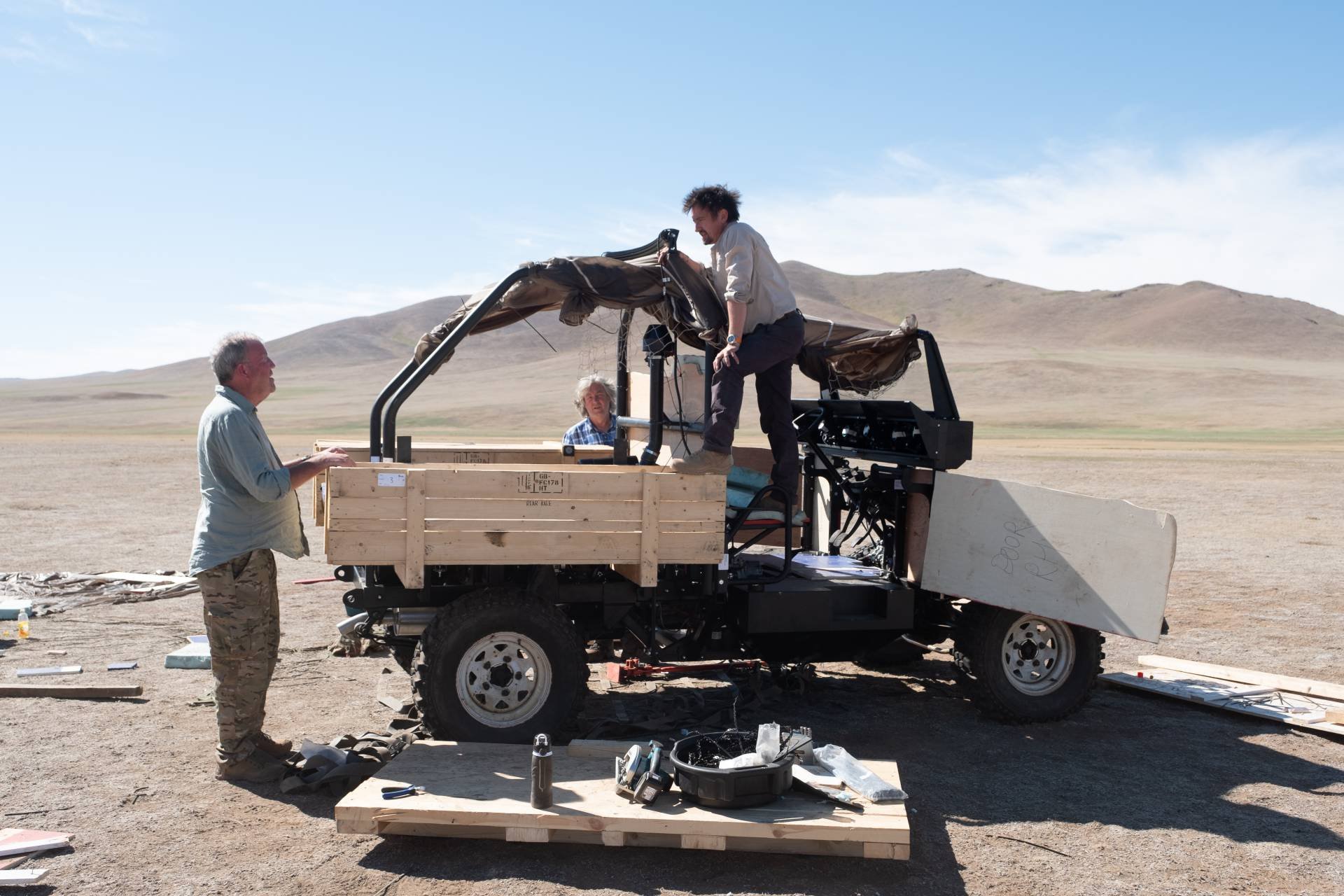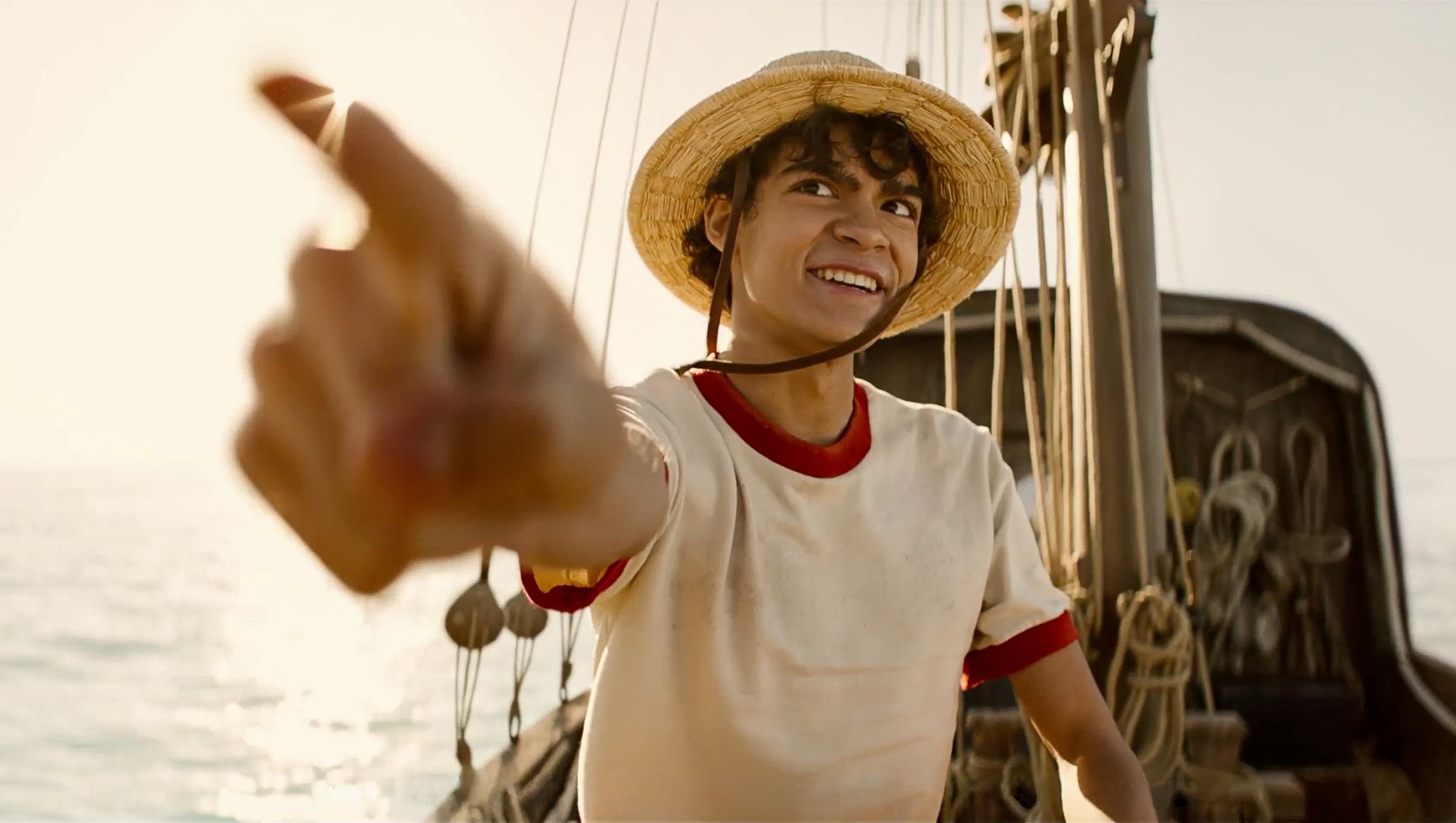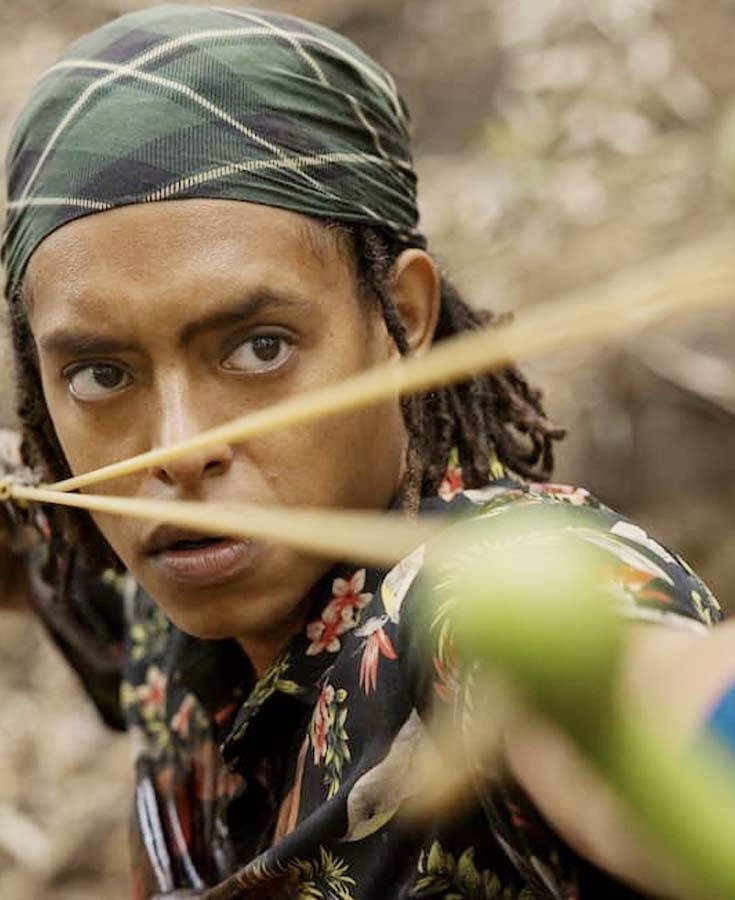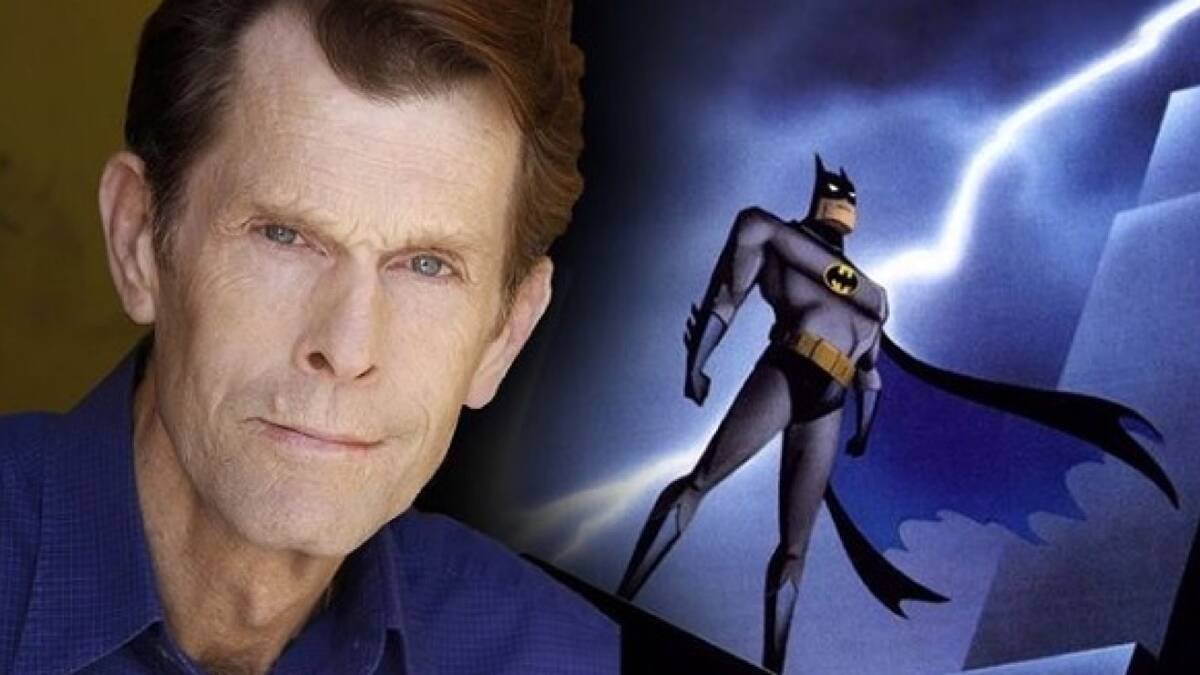The Grand Tour boys plan their next move while on the hunt for buried treasure
So, it turns out The Grand Tour is coming to an end. If you’re a fan of the show, you’ve probably already seen the news, but if I’m the one breaking it to you, I’m sorry you had to find out this way. As it turns out, this news has hit me way harder than I expected it to. After all, it’s the end of a show, shows I love end all the time. They come to a natural end, like Succession, they come to unsatisfying ends, like Dead to Me, they get unceremoniously and unjustly cancelled well before their time, like Lodge 49, The Tick, Terriers, Firefly, Infinity Train, and countless others. You’d think I’d be used to it now.
But this feels different. It’s not just the end of a show. It’s the end of an era. It’s the end of a phase of my life, and perhaps a phase of the world, that I was not prepared to see ended as I casually scrolled Facebook looking for people to wish a happy birthday to. If you don’t know, The Grand Tour is basically a continuation of the BBC’s revitalized Top Gear, starring Jeremy Clarkson, James May, and Richard Hammond. It’s a show about cars, but also not about cars. It was equally scripted as unscripted (perhaps tilting towards scripted more and more as the years went by), equally a spectacle as a documentary, equally a comedy as it is nonfiction. But it’s always been a comfort to me. I discovered the show when I was in undergrad. I won’t go much into details, but undergrad was a very bad time for me. I was away from an unhappy home, but still in an unhappy situation. I was at the same time halfway escaped and yet halfway in an emotional prison. Needless to say, in a place like that, you try to find comfort wherever you can.
Richard cooks his signature dish, beans, in the back of his WRX living space
This is before the time streaming services were available. Netflix hadn’t even started mailing people DVDs, Hulu was only introduced around the time I was graduating. Amazon was shopping site; Prime didn’t exist yet, and Prime Video even further away. I retreated into my DVDs to drown out the reality around me, even to fall asleep. But, completely unprepared for my circumstances, I only had a handful of movies and a couple TV seasons that fit into a small bag with my CDs (CDs were like small circles that had music on them before iPods were replaced by phones). And, as it turns out, you can only listen to the first season of The Office on repeat while you try to fall asleep so many times before your sanity suffers. I’d always loved cars, ever since I was a small child. This blog, in its original form, was about the joys of driving, and was originally called Acceleration Therapy. My monthly drive out to Barnes and Noble to pick up the latest issues of Evo and Car magazine, UK publications, was just a brief refuge. As a friend turned me on to Top Gear, the only way then to get it was to torrent it. So I did. I immediately fell in love with the show. It was hilarious, eye-opening, and focused of course on European and Japanese cars and locations, places I’d never come close to seeing at that point in my life and cars that I’d never heard of from all over the price scale. It was nothing like the car TV I’d seen before, usually dry retellings of the printed magazine conclusions accompanied with a reading of a spec sheet. It was dynamic, fast-moving, filled with comedic observations and easy chemistry among the hosts. It gave me everything I wanted in a car show, especially for a young man hundreds of miles away from his PlayStation and his copy of Gran Turismo.
Driving one of the most dangerous roads in the world in SUVs that really shouldn’t be there
In only a short time, I started making playlists in WinAmp so I could fall asleep to the episodes as well as watch them as soon as I, ahem, downloaded them. Top Gear became a part of me. I shared it with my friends. I would go on car forums and discuss the latest episode. As my life changed, as I moved on from undergrad, I still watched Top Gear as regularly as I could. Over time, streaming services started to carry it, and I followed it around as it bounced from platform to platform. I ended up with a 2 year subscription to Motor Trend just so I could watch it on their woeful streaming service. When that iteration of Top Gear came to an end because of Jeremy Clarkson’s antics, I was crestfallen, but I understood. And yet, I was overjoyed when I heard the trio was returning on an Amazon Prime show called The Grand Tour. I followed that through its teething issues, got to its relatively perfected third season, and then again felt torn up when I found out they were ending the show. But it was only that format, mostly a copy of the old Top Gear format, where they had a studio, or in this case a tent, and audience, with different segments, car reviews, and celebrity guests. They’d continue on doing specials, arguably the funniest and most memorable episodes of either Top Gear or The Grand Tour. It made me so happy. But now that’s ending too.
It’s not that I don’t understand. Pretty much everything about the show is questionable now. Clarkson himself is no stranger to controversy; he’s made casually racist comments, he’s been sexist, homophobic, I think he threw a phone at someone once. Or maybe he just punched someone. He’s no angel. Cars have been on the decline for over a decade now, I don’t even keep up with the car market anymore. Almost nothing comes with a manual transmission and cars are so fast these days, they’re made with such high limits that they’re no longer fun to drive at anything close to legal speeds. Sensation and feel have been replaced with spec sheet one-upmanship and a greater focus on technology integration. Instead of trying to get people to stop texting and pay attention to what they’re doing, cars started being designed to make it safer. I guess if you can’t stop people from texting while driving, that’s the right thing to do. Still, it makes me sad. Then there’s also the whole climate change of it all. I’m not a scientist, but I choose to listen to the scientists who, well, are, and they tell me cars have a negative impact on the environment. I’m not in love with that information, but I get that driving is a thing we have to do less. So an extravagant, globetrotting comedy show celebrating the automobile in its modern iteration can seem a little tone-deaf in this age. Not only that, Jeremy, James, and Richard are not young men anymore. Time eventually comes for us all; when I think about things I am too tired to do in my 30s that I did in my 20s, I can’t imagine mustering the energy to drive through mud in a modified Caterham with no roof or doors or sleep in the back of a WRX wagon while searching for the source of the Nile or build a truck by hand in a Mongolian desert in my 50s and 60s. I don’t even like camping now. So I understand. All things end.
Honestly, I need a shower just looking at this photo. I’m not built for the outdoors.
But I can’t help this feeling that there’s a hole in me now. Something missing. That some part of me has ended too. What an odd way to face your mortality. Mourning the loss of a television show about cars. And yet, here I am, doing just that. Mourning and facing my mortality. It’s funny how some things sneak up on you and others just punch you in the face. Life starts out so big. At one point in your life, everything you do, you do for the first time. The world is huge and you are so, so small. It’s full of wonder. Then, time passes and life gets a little smaller. You find out Santa’s not real, and even if he were, your house isn’t in his address book. You have your first heartbreak, maybe you fail your first test, maybe you get your driver’s license and taste freedom for the first time behind the wheel of a car like I did. You move away from the place you called home and come to the point where it’s not your home anymore. Dreams for the future slowly become the practical realities of today. Life keeps getting smaller.
Top Gear, The Grand Tour, and the boys Jeremy, James, and Richard kept that sense of wonder alive in me at a time when things weren’t good for me. They kept it alive for many years after that as well. They helped create an emotional home for me when I didn’t really feel like I had another. Other shows and movies helped me there too, and they’ve come and gone. But Clarkson, May, and Hammond have been there so long, I’ve seen myself grow from a Clarkson into a May (well, not perhaps exactly the man affectionately known as Captain Slow or Mr. Slowly, but I have found that his love for small, simple, honest sporty cars has rubbed off on me and I enjoy them a lot more than the latest winged hypercar with a million horsepower). They’ve been part of my life so long, I started to forget that there’d be a time they wouldn’t be anymore. And yes, I can be comforted by the fact that they’re still going to be making content. James May’s Our Man in Japan and Our Man in Italy and Oh Cook are shows I truly enjoy. Clarkson’s Farm, which I’ve written about in this blog before, has another season on the way and perhaps even more after that, I can only hope. Richard still has DriveTribe (with James as well) on YouTube and even though his show with Tory Bellici from Mythbusters, The Great Escapists, was largely unsuccessful, it’s still there to watch. But it’s not the same as the three of them doing something horrendously irresponsible in a car together. And while there’s such a large back catalogue of episodes I can revisit any time I want (for the moment, until the streaming license changes hands once again), it’s not the same as seeing them do it all for the first time.
I suppose, however, that if you look hard enough, change isn’t only a destructive force. Something new will come, some other way to keep the wonder alive. And maybe then, life will feel a bit bigger again. The holidays are coming up, so I guess it’s as good a time as any to note that art is a gift. Entertainment is a gift. And along with that, wonder is a gift. In a way, I write this blog for myself. I don’t know how many of you out there are reading this, but the analysis I do here, the praise I enjoy heaping on projects I love, the scorn with which I criticize properties that I think are best avoided, that’s my way of trying give a gift to all of you. I’d love to tell you all you have a car under where you’re sitting, but since I’m on the other side of Oprah, sharing with you all the things that I love and create that sense of wonder in me is my way of giving you a gift (I mean, logistically, I would have no idea when or where you’d be if you’re reading this, so how am I going to put a Pontiac G6 under your chair? Oprah had a studio, that’s a huge advantage). One that I hope you’ll take and share with other people. So we can all come together, regardless of the time of year, and help keep wonder alive for each other. And we can keep life feeling big.
Thank you for making it this far. I know this was a more personal post than most, so I appreciate you reading it. I’d like to end here, not with despair, not with mourning, and not even with a hopeful message for the future. I’d simply like to thank Jeremy Clarkson, James May, Richard Hammond, and everyone who ever worked on Top Gear or The Grand Tour, all the crew, all the health and safety folks, the guests, anyone who contributed in any way to make them the shows that had the impact on me that they did. Thank you all for being a part of my life. I will miss your work dearly and share it with as many people as I can.

















